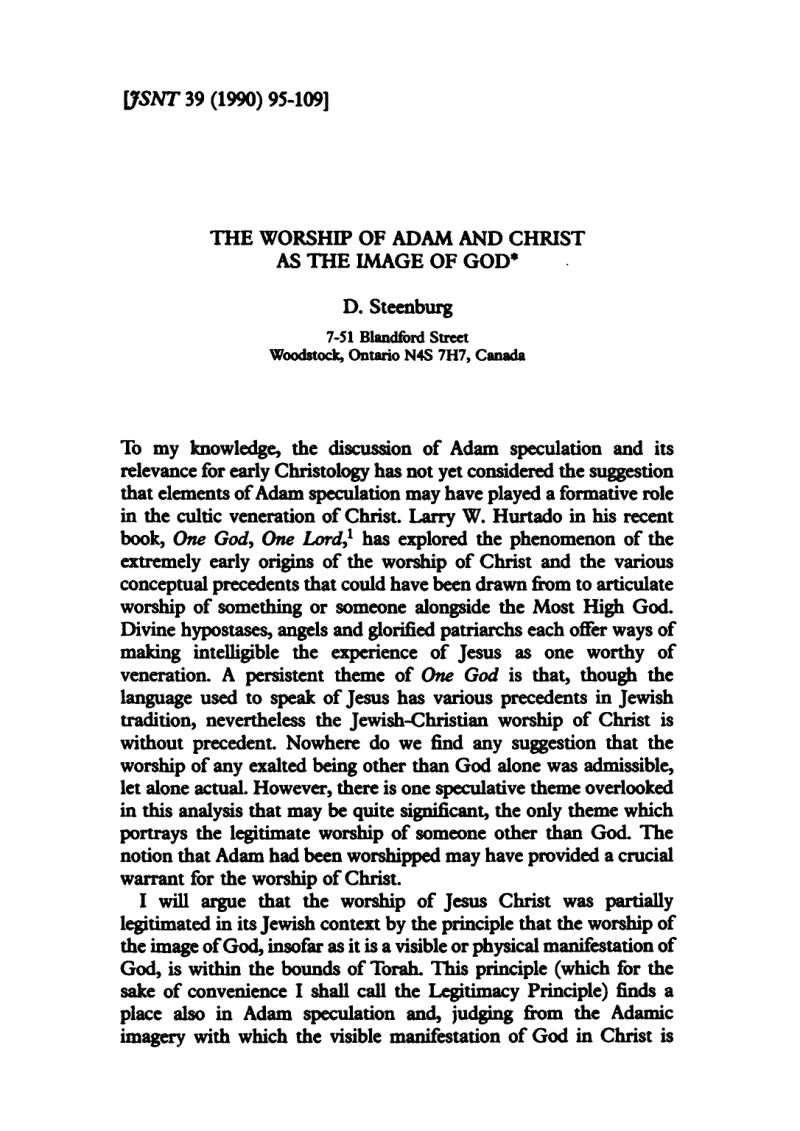D. Steenburg discusses the Adam theology informing early high Christology in the New Testament, such as Jesus (and Adam) being in the "image of God" and being recipients of religious veneration.
- Type
- Academic / Technical Report
- Source
- D. Steenburg Non-LDS
- Hearsay
- DirectSecondary
- Reference
D. Steenburg, "The Worship of Adam and Christ as the Image of God," Journal For the Study of the New Testament 39 [1990]: 95-109
- Scribe/Publisher
- Journal for the Study of the New Testament
- People
- D. Steenburg
- Audience
- Reading Public
- Transcription
Conclusion
The point of my argument has been that in early Jewish devotion to Christ and thus in the development of the Christ cultus there was operative a sense of lawfulness derived from an understanding of Christ's (and Adam's) possession of the image of God. As noted at the outset, my findings do not present a conclusive case. A fuller argument would require a more exhaustive treatment of the way in which Adam is described as being in God's image. Is the reference to 'face and likeness' indeed unique; can it be accounted for in other ways? Would the argument that the element of visible manifestation is emphatic on the Adamic portrait of Christ stand up to a more rigorous examination of the use of μορφή and χαρακτήρ? Also, the question of the extent and role of Adam Christology in the NT and the early Christian community would need to be considered.
Beyond drawing attention to the possibility of a direct relationship between the Legitimacy Principle, Adam Christology and the worship of Christ, I make no attempt to explain how this relationship came about. I do believe the correlation of Adam Christology and the Legitimacy Principle played a formative role in the veneration of Christ, but it may not have been a causal role. Whether the worship of Christ preceded is articulation in terms of an Adam Christology or whether Adam Christology preceded the recognition of the Legitimacy Principle—or whether they all merged together spontaneously out of some crucial event—is a consideration beyond the scope of a technical paper of this sort. While finding in the Legitimacy Principle a rationale for the worship of the image of God by devout monotheistic Jews, it takes us no closer to understanding the mystery of how the mundane Jesus came to be seen in this light.
- Citations in Mormonr Qnas
The B. H. Roberts Foundation is not owned by, operated by, or affiliated with the Church of Jesus Christ of Latter-day Saints.

